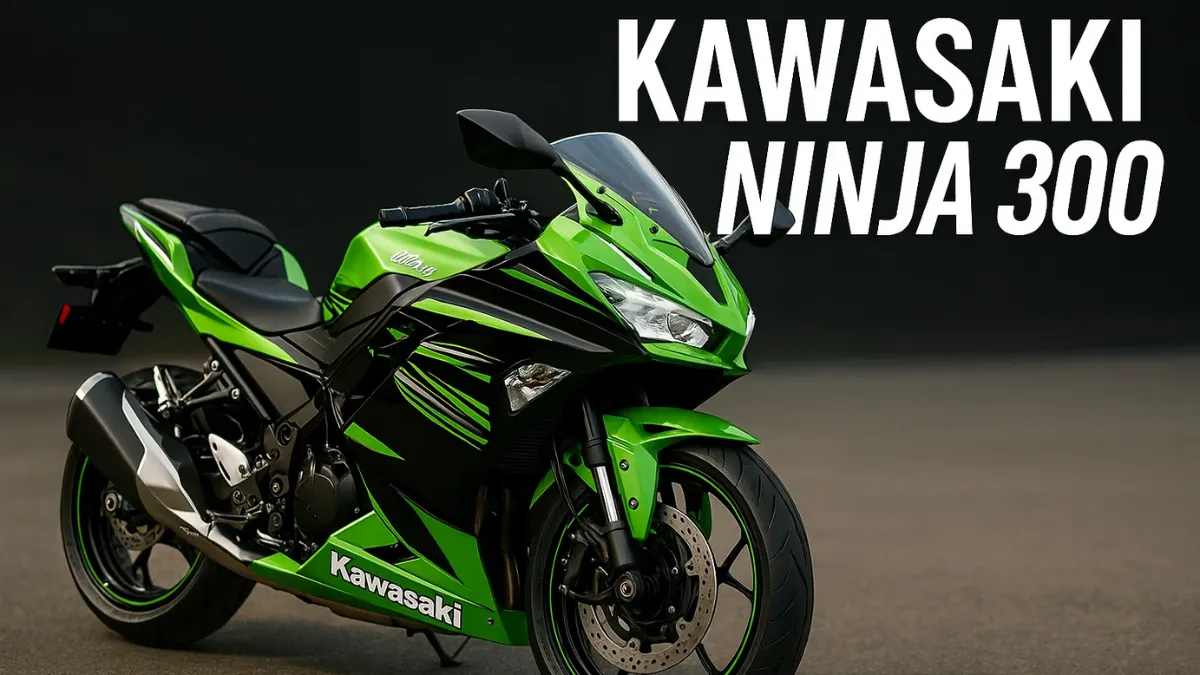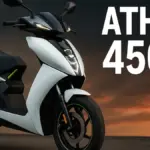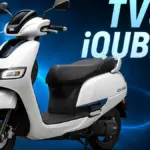When you think of motorcycles that perfectly combine performance, style, and practicality, one name often stands out — Kawasaki Ninja 300. A bike that sits beautifully between beginner-friendly and performance-oriented, the Ninja 300 is one of those machines that can make your heart race while still being forgiving enough for daily commutes.
Kawasaki has mastered the art of building bikes that inspire confidence. The Ninja 300 continues this tradition by offering the thrill of a supersport motorcycle in a manageable, comfortable, and reliable form. Whether you’re a new rider looking to step up from a smaller bike or a seasoned enthusiast wanting a refined, city-friendly sportbike, the Ninja 300 delivers both excitement and dependability in one stunning package.
Highlights Table
| Feature | Specification |
|---|---|
| Engine Type | 296cc, Liquid-Cooled, 4-Stroke, Parallel Twin, DOHC, 8-Valve |
| Max Power | 39 PS @ 11,000 rpm |
| Max Torque | 26.1 Nm @ 10,000 rpm |
| Transmission | 6-Speed Manual with Assist & Slipper Clutch |
| Frame Type | Diamond Steel Frame |
| Kerb Weight | 179 kg |
| Seat Height | 780 mm |
| Fuel Tank Capacity | 17 Litres |
| Front Suspension | 37 mm Telescopic Fork |
| Rear Suspension | Uni-Trak Gas-Charged Monoshock |
| Brakes | Front: 290 mm Disc, Rear: 220 mm Disc, Dual-Channel ABS |
| Tyres | Front: 110/70-17, Rear: 140/70-17 |
| Mileage (Approx.) | 25–30 km/l |
| Top Speed | Around 180 km/h |
| Price Range (India) | ₹3.3 – ₹3.5 Lakh (Ex-showroom) |
Kawasaki Ninja 300: Full Review
1. Design and Styling – Timeless Ninja DNA
The Kawasaki Ninja 300 is a bike that proudly carries the iconic Ninja legacy. Its design is sporty yet elegant, with lines inspired by its elder siblings like the Ninja ZX-6R and ZX-10R. The front features a sharp twin-headlamp setup that gives it an aggressive look, while the full fairing enhances aerodynamics and visual appeal.
The sculpted fuel tank and sporty rear cowl make the Ninja 300 look fast even when standing still. The high-quality paint job, precise panel fit, and the signature “Lime Green” color make it instantly recognizable as a Kawasaki.
What makes the Ninja 300’s styling truly commendable is that it doesn’t try too hard. It has a subtle charm — a fine mix of performance looks and daily practicality.
2. Engine and Performance – Twin-Cylinder Perfection
At the core of the Ninja 300 lies its most impressive element — a 296cc liquid-cooled, parallel-twin engine. Unlike single-cylinder rivals, this twin-cylinder setup provides unmatched smoothness and refinement.
Producing 39 PS at 11,000 rpm and 26.1 Nm at 10,000 rpm, the Ninja 300 is fast but not intimidating. The power delivery is linear, making it perfect for both beginners and experienced riders. The 6-speed gearbox is buttery smooth, enhanced by an assist and slipper clutch — ensuring seamless downshifts without wheel hop.
On the highway, the Ninja 300 feels composed at high speeds. It easily cruises at 120–130 km/h while still having enough power left for overtakes. In city traffic, the clutch action is light, and the engine heat is well managed — something not all sportbikes can boast of.
In short, the Ninja 300 gives you the joy of a supersport without the stress of handling one.
3. Ride and Handling – Everyday Supersport Feel
Kawasaki has tuned the Ninja 300 to be comfortable and agile. The diamond-type steel frame provides rigidity without making the bike too stiff. At 179 kg, it’s light enough to flick through corners while feeling stable on highways.
The 37 mm telescopic fork at the front and Uni-Trak gas-charged monoshock at the rear deliver a balance between comfort and sportiness. Even on bumpy city roads, the suspension soaks up imperfections nicely.
Cornering on the Ninja 300 is pure fun. The bike’s low center of gravity, sharp steering response, and sticky tires inspire confidence. Whether you’re riding through twisty mountain roads or cruising along the city streets, it feels planted and predictable.
4. Braking and Safety – Confident and Reliable
Braking duties are handled by a 290 mm front disc and a 220 mm rear disc, supported by dual-channel ABS. The braking performance is sharp and progressive — you can brake hard without losing control or locking up.
Kawasaki has also equipped the Ninja 300 with a slipper clutch, which adds another layer of safety during aggressive downshifts. Together, these features make the Ninja 300 a reliable and safe companion for riders at any skill level.
5. Comfort and Ergonomics – Everyday Practicality
Despite its sportbike design, the Ninja 300’s ergonomics are surprisingly friendly. The 780 mm seat height ensures that even shorter riders can place their feet comfortably on the ground. The clip-on handlebars are positioned slightly higher than pure supersports, offering a semi-upright posture that reduces wrist fatigue.
The seat cushioning is adequate for longer rides, and the pillion seat — though compact — is better than most bikes in this segment. The mirrors provide good visibility, and the switches and controls are tactile and well laid out.
You can easily ride this bike for hours without discomfort, making it one of the few sportbikes that truly works for daily use.
6. Mileage and Efficiency – A Smart Performer
For a twin-cylinder sportbike, the Ninja 300 delivers respectable fuel efficiency. In city conditions, it offers around 25 km/l, while on highways, it can touch 30 km/l if ridden sensibly.
The 17-litre fuel tank gives it an impressive range of 400–450 km, reducing the need for frequent fuel stops on long rides. Kawasaki’s refinement and precise fuel injection system ensure that performance doesn’t come at the cost of efficiency.
7. Technology and Features – Simplicity Meets Modernity
The Ninja 300 keeps things minimal yet modern. The semi-digital instrument console includes an analog tachometer and a digital display that shows the odometer, trip meter, fuel gauge, and clock.
While it may not have advanced features like Bluetooth connectivity or TFT screens, the simplicity adds to its charm — focusing on pure riding pleasure rather than distractions.
Dual-channel ABS, a slipper clutch, and high-quality build materials ensure that even without flashy tech, the Ninja 300 feels premium and sophisticated.
8. Build Quality and Reliability
Kawasaki is globally recognized for its durability, and the Ninja 300 is no exception. The paint finish, switchgear quality, and overall fit and finish feel top-class. The bike can handle daily use, long rides, and even occasional track days without issues.
Maintenance is relatively straightforward, and Kawasaki’s service network in India has grown significantly. The brand’s reliability ensures peace of mind for long-term ownership.
9. Competitors and Market Position
The Ninja 300 competes with motorcycles like the Yamaha R3, KTM RC 390, and TVS Apache RR 310. While the KTM and Apache offer more aggressive performance or advanced features, the Ninja 300 shines in terms of refinement, comfort, and twin-cylinder smoothness.
It’s not the cheapest in its class, but it justifies its price with its brand value, durability, and premium riding experience.
10. Why the Ninja 300 Is the Ideal Sports Bike
- Twin-cylinder smoothness unmatched in the segment.
- Practical riding posture suitable for daily use.
- Strong build quality and trusted brand reputation.
- Stylish yet timeless design that never feels outdated.
- Balanced power ideal for both new and experienced riders.
It’s the perfect example of a sportbike that blends performance and practicality, making it ideal for city riding, highway touring, and weekend fun alike.
Conclusion
The Kawasaki Ninja 300 isn’t just a motorcycle — it’s an experience. It combines sporty looks, refined performance, and everyday usability in a way few bikes can. It may not be the most advanced or the fastest, but it’s one of the most balanced, reliable, and enjoyable sportbikes on the market.
Whether you’re a beginner stepping into the world of performance motorcycles or an enthusiast seeking a dependable daily rider with a sporty edge, the Ninja 300 stands tall as the ideal choice for everyday thrills.
FAQs
Q1. What is the mileage of Kawasaki Ninja 300?
The Ninja 300 offers around 25 km/l in city and 30 km/l on highways, depending on riding style.
Q2. What is the top speed of the Ninja 300?
It can reach a top speed of approximately 180 km/h.
Q3. Is the Ninja 300 suitable for beginners?
Yes, its smooth power delivery, light clutch, and balanced handling make it an excellent choice for beginner and intermediate riders.
Q4. Does the Ninja 300 have ABS?
Yes, it comes equipped with dual-channel ABS as standard.
Q5. What are the color options available?
Kawasaki typically offers the Ninja 300 in Lime Green, Ebony, and Candy Lime Green shades.
Q6. How comfortable is the Ninja 300 for long rides?
With its semi-upright seating and refined engine, it’s comfortable for both short and long-distance rides.
Q7. What’s the service cost of the Ninja 300?
Regular service costs are reasonable for its class, typically around ₹4,000–₹6,000 per service in India.








